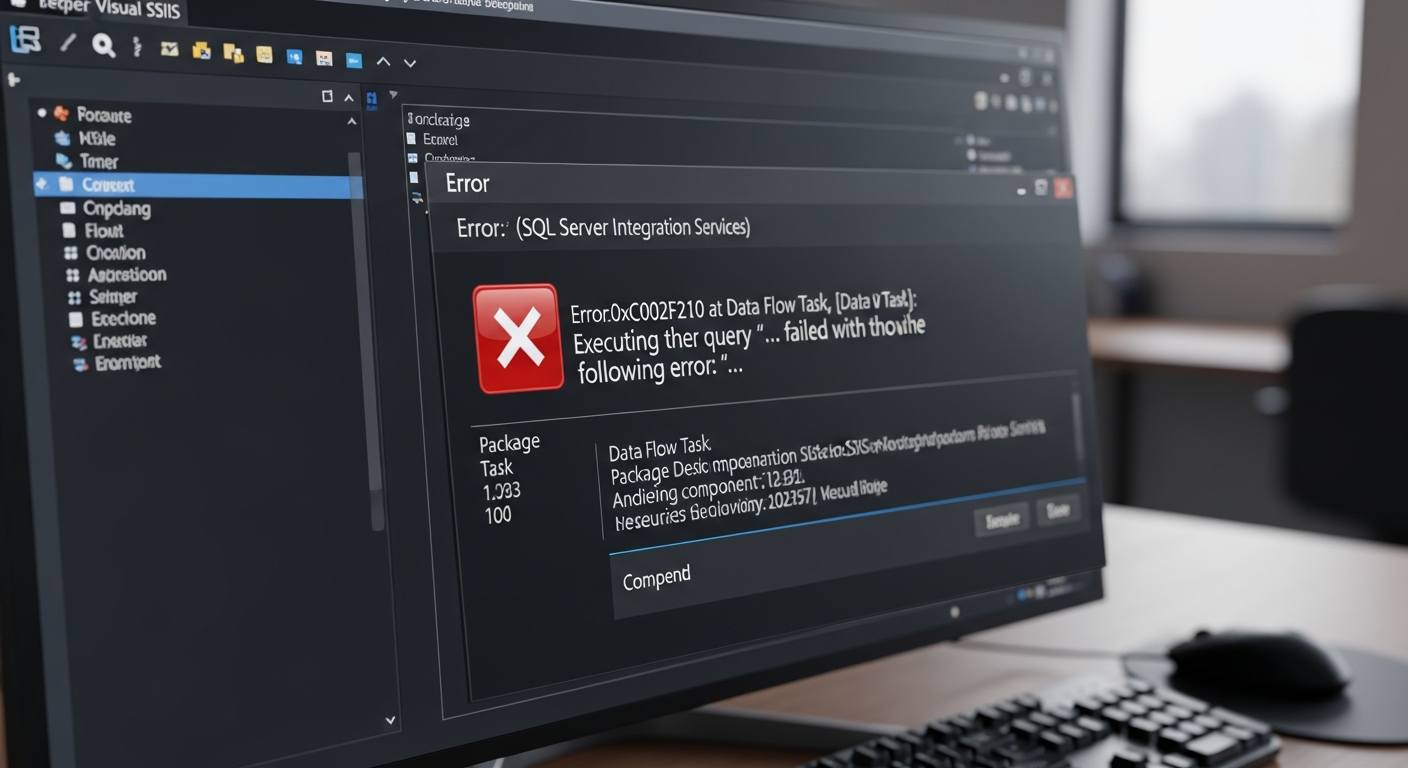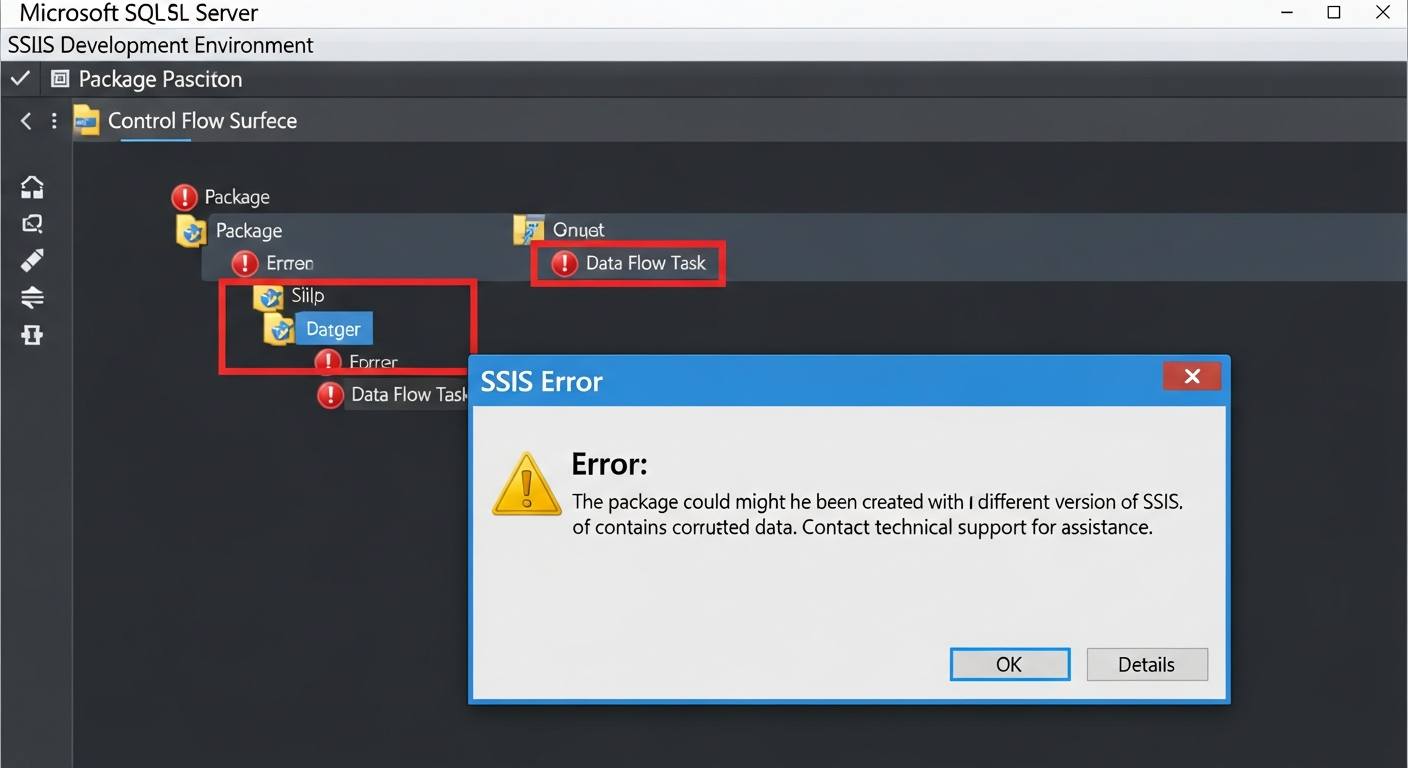When working with SQL Server Integration Services (SSIS), you might sometimes see error code 469 pop up in your logs. SSIS 469 is a generic package execution error – it signals that something in your ETL data flow failed, but SSIS doesn’t give a clear explanation. In fact, as one expert notes, “SSIS 469 is a symptom, not the cause”. In practice this means you get a message that a task stopped, but no friendly description of why. In other words, SSIS 469 tells you where to start looking, but you must dig into the package logs and details to find the real problem.
Common Causes of SSIS 469
SSIS 469 usually means “something unexpected happened,” and it can be triggered by many issues. Common scenarios include schema or configuration changes that break your package. For example, if you rename a column or change a data type in a source or destination table, the SSIS package’s metadata may no longer match and a task can fail. Similarly, connection problems (expired credentials, moved servers, or network glitches) can cause data flows to stop. In some cases, very large or ill-formatted data can overflow SSIS buffers or fail type conversions, which also throws error 469. Security issues are another frequent culprit: if the SSIS service account suddenly loses access to a file, folder or database, you’ll often see a permissions-related failure. In short, SSIS 469 can be caused by a variety of faults. Common triggers include:
-
Metadata mismatches (e.g. a column name or data type changed in the source/destination).
-
Connection failures (database or file connections broken by bad credentials, moved servers, or network issues).
-
Data overflow or type errors (very large rows or incompatible data types causing memory spikes or conversion problems).
-
Component misconfiguration (incorrect column mappings, invalid expressions, or missing custom components in the package).
-
Permission issues (restricted file system or database access for the SSIS account).
When SSIS 469 appears, the log may simply note that a task failed. For clues, enable detailed SSIS logging and review the error messages of the failing task. The log might hint at, say, a data conversion error or a missing file. But without enabling verbose logging you’ll often see nothing beyond “Task X stopped” – that’s why we say 469 is just a starting point for investigation.
Troubleshooting Steps
To fix SSIS 469, work through a systematic debug process. First, turn on detailed logging for your package (include task and pipeline logs) and run the package in debug mode. Note which task or data flow fails first. Then follow these steps in order:
-
Examine the error output. Look carefully at the error messages for the failing component. With verbose logging on, you might see hints like a type conversion failure, a missing file path, or a permission denied message. Even partial text (e.g. “access denied” or “cannot convert”) can direct your next move.
-
Refresh metadata. If you suspect a schema change, open the Data Flow components (like OLE DB Source/Destination) and click “Refresh” to re-sync column names and data types. This ensures SSIS sees the current schema.
-
Verify connections. In the Connection Manager, click “Test Connection” for each database or file connection. Make sure connection strings are correct, server names are reachable, and login credentials are valid. Connection failures are a common cause of 469 errors.
-
Check permissions. Ensure the Windows/SQL account running the package has the necessary rights. If reading/writing files, that account needs read/write/modify access to the folders. If accessing a database, the login needs the right roles or permissions. SSIS often logs 469 when a permission is denied (for example, you might see “user does not have permission…” in the message).
-
Isolate the failing task. If the error persists, try breaking the package apart. Create a small test package that runs only the failing component or data flow. Sometimes isolating it makes the real error clear. Also watch your server’s memory and CPU – very large data or limited resources can cause silent failures.
After each change, rerun the package to see if the 469 error goes away. This step-by-step approach – logging, inspecting outputs, fixing the issue, and re-testing – usually pinpoints the root cause. With each fix, you should see a different, more informative error or none at all when SSIS 469 is resolved.

Preventing SSIS 469 and Best Practices
Once you find and fix the issue, it’s wise to prevent SSIS 469 from happening again. Follow these best practices:
-
Use external configurations. Store connection strings, file paths and other settings outside the package (in config files, environment variables, or SSIS project parameters). That way you reduce the chance of mismatched values when moving between environments.
-
Version-control metadata. Keep your SSIS packages (and their metadata) under source control. When a database schema changes, update the packages and commit the changes. Always refresh component metadata after any upstream schema update.
-
Batch large workloads. For very large data sets, split the data into smaller chunks or use batching. This avoids buffer overflows or timeouts that can trigger 469.
-
Implement retries for transient faults. In control flow tasks (like Execute SQL Task or FTP Task), enable retry attempts with delays. A brief network glitch or lock timeout can sometimes cause a task to fail; retry logic lets it recover automatically.
-
Regular reviews. Periodically audit old SSIS packages. Packages that haven’t been run or updated in a year can drift out of sync with the current environment. A quick revalidation can catch hidden schema or connection issues before they cause 469 errors.
By following these practices – especially refreshing metadata and externalizing configs – you minimize surprise failures. Additionally, consider improving your monitoring: build a robust logging strategy that captures SSIS execution details (start/end times, row counts, etc.) and store logs centrally. Set up SQL Server Agent alerts or dashboards to notify your team immediately if a package fails. That way, if SSIS 469 (or any error) occurs, you hear about it right away and can fix it before it impacts critical processing.
Conclusion
SSIS error 469 can be frustrating because it doesn’t spell out the problem. However, it’s essentially a signal to investigate your package. By enabling detailed logging and carefully checking each step – from metadata to permissions – you can track down the underlying issue. Think of 469 as a detective clue: once you follow the leads, you’ll usually uncover a fix like updating a schema, correcting a connection, or granting a needed permission.
With experience, you’ll recognize the patterns behind 469 errors. In the future, proactive measures like version-controlled packages, external configs, and good logging will keep these errors rare. In the words of one SSIS best-practice guide, “SSIS 469 is a call to investigate, not a dead end”. In other words, a little preparation and a systematic approach can resolve SSIS 469 quickly, keeping your data pipelines running smoothly.



